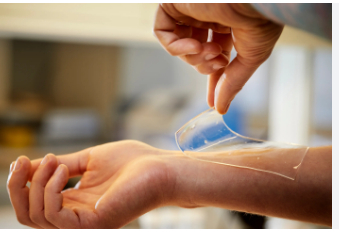
Hydrogel dressings are a sought-after selection in modern wound treatment because of their unique properties and advantages. These advanced dressings are created to create a moist environment that aids in the natural healing process. Here’s everything you should be aware of about hydrogel dressing.
What Are Hydrogel Dressings?
hydrogel manufacturing,hydro gel are composed of an emulsion-like substance which contains an extremely high proportion of water. This formula allows them to absorb exudate from wounds (fluid) while also maintaining a moist environment surrounding the area of wound. They are typically employed to treat partial or full-thickness wounds, including burns, ulcers and surgical wounds.
Benefits of Hydrogel Dressings
Moisture Retention: One of the key advantages for hydrogel dressings lies in their ability to keep a moist wound environment. This moisture helps to promote the migration of cells and repair of tissues, which can speed up the healing process and reduce scarring.
Pain Relief: Hydrogel dressings can provide a cushioning effect that helps to reduce the discomfort and pain that comes to wound care. Gels can also be used to soothe inflamed or irritated skin.
The dressings facilitate autolytic debridement. This is a procedure where the body’s own enzymes break down and remove dead tissue from the wound. This helps in preparing the wound’s bed for healing.
Reduced Infection Risk: By creating a barrier to prevent the spread of infection, hydrogel dressings help to lower the risk of infection. They also decrease the requirement for frequent dressing changes, which can reduce the risk of infection.
When to Use Hydrogel Dressings
Hydrogel dressings are especially useful for wounds which are dry or with moderate to low exudate. They are perfect for wounds that have necrotic tissue because they help reduce dead tissue and soften it. However, they might not be appropriate for severely exuding wounds, or for wounds that have indications of infection, since excessive moisture could cause maceration (skin breakdown due to excess moisture).
Application and Care
Applying a hydrogel dressing is simple. Cleanse the wound with a thorough clean, then place the hydrogel dressing and secure it with either tape or a bandage, if required. Monitoring is vital to ensure that the dressing is in place and the wound heals properly. Typically, hydrogel dressings need to be changed every 1-3 days, depending on the amount of fluid and the manufacturer’s recommendations.
Conclusion
Hydrogel dressings are a valuable tool in wound management and offer numerous benefits to improve healing and comfort. Their ability to maintain the environment moist, provide pain relief, and support natural debridement makes them an versatile choice for various types of wounds. However, like any medical device, they must be utilized based on the specific needs of the wound and under the supervision of a healthcare expert.

